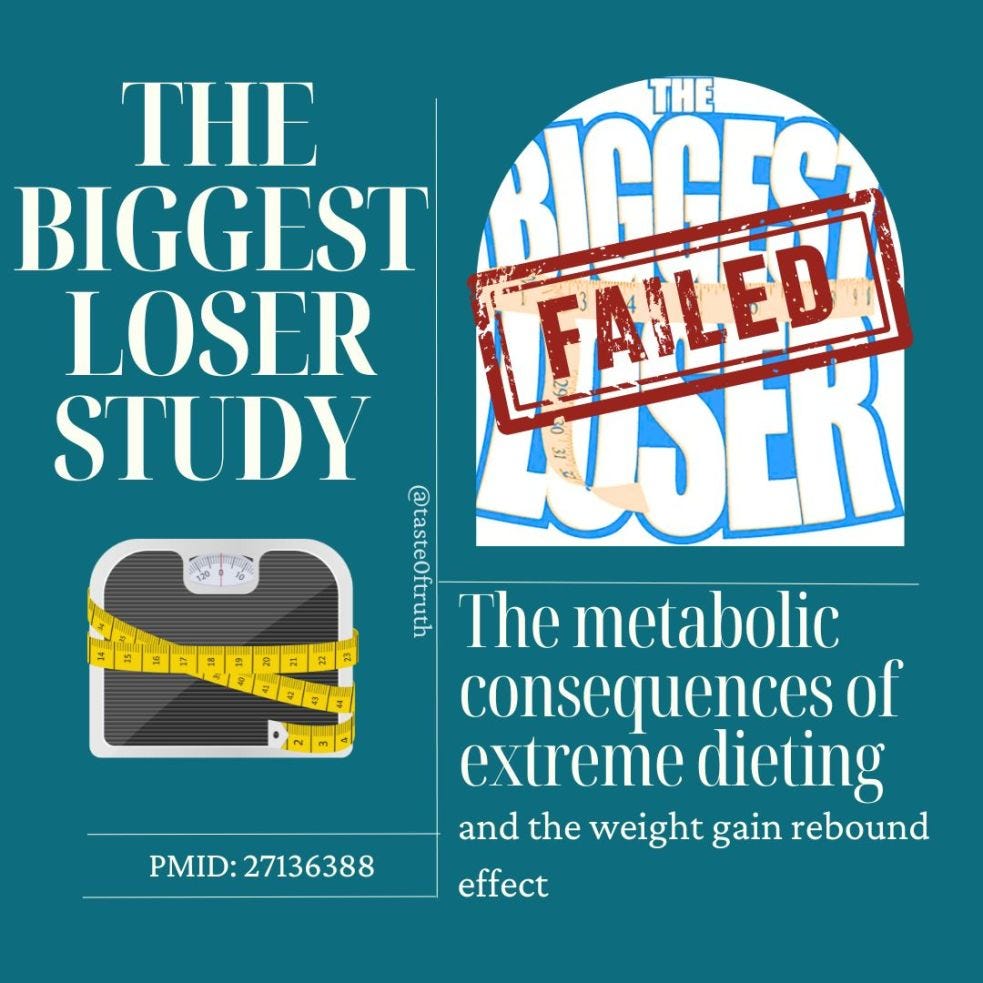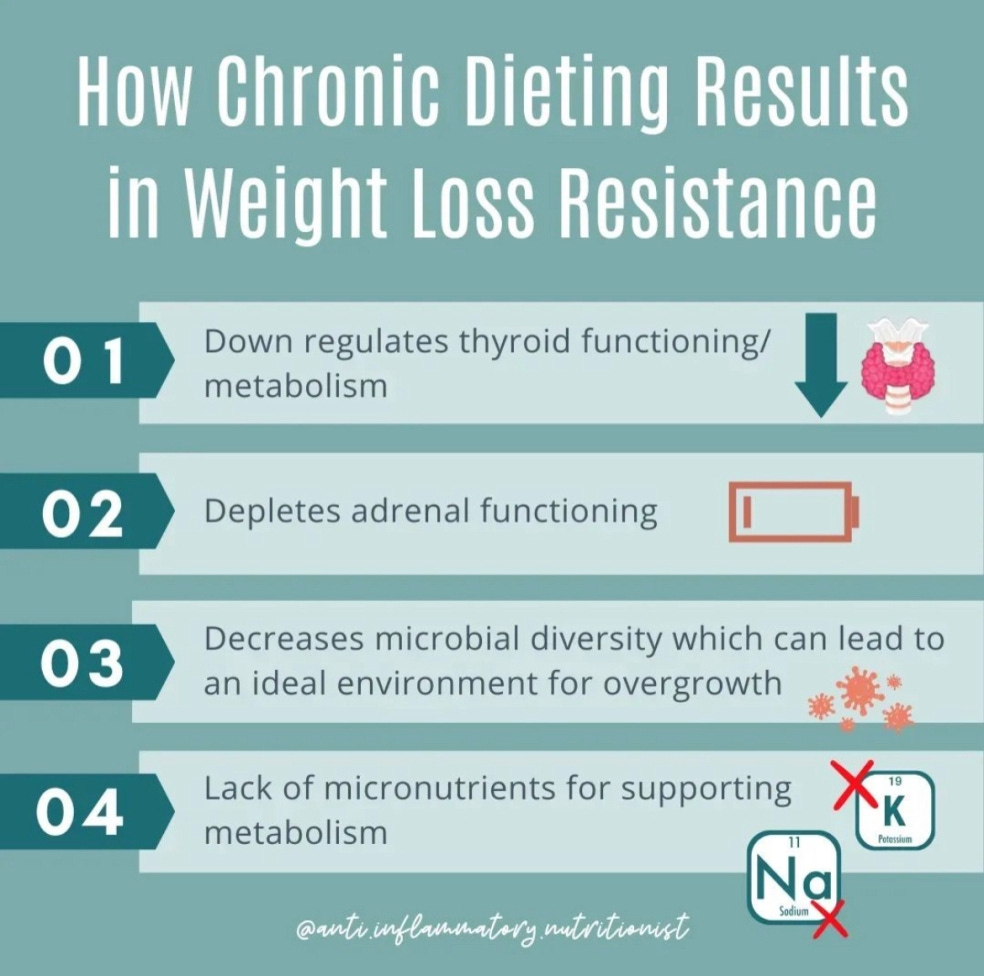Welcome to Taste of Truth Tuesdays—where we challenge the quick-fix culture, dive deep into the science, and find practical ways to take care of our bodies and minds. Today we’re tackling a hot topic: weight loss—or more accurately, fat loss—and why I preach the mantra: “You’ve got to earn the right to diet.”
Our culture is obsessed with weight loss—seriously, it’s everywhere. It’s in magazine headlines, social media posts, and those cringe-worthy commercials promising “30 pounds in 30 days!”
But here’s the deal: when we talk about weight loss, what most of us really want is fat loss. And that’s a critical distinction. For example, when we discussed in our opening episode about Ozempic, some people using the drug experience muscle loss and lower bone density, increasing the risk of injury—especially for older adults. So, losing “weight” can mean losing muscle, water, or even bone density—not exactly what we’re aiming for, right?
Before diving into dieting strategies, let’s start with the fundamentals: metabolism, daily energy needs, and why chasing fat loss without preparation often backfires.
Understanding Metabolism and Energy Needs
First, to break down the metabolism, let’s chat about your Total Daily Energy Expenditure—TDEE, for short. This is the total amount of energy (aka calories) your body burns in a day. Think of it like your budget: how much energy you’re spending to stay alive, digest food, and live your life.
Here’s what makes up your TDEE:
1. Resting Metabolic Rate (RMR)
This is your body’s baseline energy burn—the calories you need just to breathe, pump blood, and stay alive.
Body size & muscle matter: More muscle means burning more calories, even when you’re chilling on the couch.
Age matters too: As we age, we lose muscle and, unfortunately, burn fewer calories. But guess what? It’s never too late to hit the weights and change that!
2. Thermogenesis
This is the heat your body produces to maintain a stable temperature. It also includes the Thermic Effect of Food (TEF)—the energy required to digest, absorb, and store the food you eat. About 10% of the calories you consume go toward this process, proving that even digestion is hard work!
3. Physical Activity
This includes both Exercise Activity and Non-Exercise Activity Thermogenesis (NEAT)—everyday movements like walking, housework, thinking, carrying groceries, or even fidgeting. NEAT can make up 15% of your TDEE, while intentional exercise typically contributes around 5%. Never underestimate the power of a good walk!
Fat Loss ≠ Weight Loss
Here’s the thing: your body isn’t a spreadsheet. It doesn’t see your calorie deficit and say, “Oh great, let’s burn fat!” Instead, your body adapts to survive. When you cut calories too hard or for too long, your body gets the message: famine alert! It starts conserving energy and prioritizing survival.
The result? You feel tired, your hair starts thinning, your period might disappear, and fat loss grinds to a halt. This is called metabolic adaptation, and it’s a feature—not a bug. Your body’s goal is survival, not helping you fit into your old jeans.
The Metabolic Aftermath - Lessons from The Biggest Loser
Let’s get into the nitty-gritty science of why extreme dieting is a metabolic disaster waiting to happen. Remember the Biggest Loser study we teased in the first episode of this season? Well, buckle up because we’re about to unpack it further.
To recap: contestants on The Biggest Loser followed an intensely restrictive protocol. They ate roughly 1,200 calories per day and worked out like machines—90 minutes of intense exercise six days a week, sometimes up to five or eight hours daily, according to some contestants. Their grocery lists? Approved by their trainers, and dominated by so-called "Franken-foods" like fat-free cheese and energy drinks. The result? Drastic weight loss during the season. But the aftermath tells a much darker story.
The Study: What Happened Post-Show?
In 2015, six years after their stint on the show, researchers revisited the contestants. By then, they’d regained about 70% of the weight they lost—but their metabolisms didn’t bounce back. In fact, their resting metabolic rate (RMR) was still burning 700 fewer calories per day than when they first started the show. That’s 500 calories less than predictive equations would expect based on their regained body weight. This is a huge deal.
Participants also lost 25 pounds of lean mass during the filming of the show. They did regain about 13 pounds of it, but their RMR didn’t increase accordingly. Usually, regaining lean mass helps boost your metabolism, but not for these contestants. Their bodies were still in "conservation mode."
Why? Because extreme calorie deficits and grueling exercise regimens wreak havoc on your body’s hormonal systems:
Leptin, the hormone that signals fullness and regulates energy expenditure, plummeted during the show. After contestants regained weight, leptin levels rebounded, but their RMR didn’t follow suit. Normally, these two rise and fall together, but the link was severed.
These metabolic adaptations weren’t just temporary—they lingered years later, showing that the body doesn’t easily forgive extreme restriction.
What Does This Mean for Us?
Many people think fat loss is all about willpower or psychological resilience. But as this study shows, extreme dieting fundamentally changes your physiology. Your body isn’t just sitting idly while you slash calories; it’s actively fighting back to keep you alive. Once that metabolic "check engine" light goes on, calorie restriction becomes far less effective than it was at the start. This is why dieting feels so much harder over time.
The Cost of Chronic Dieting
The Biggest Loser study highlights the long-term consequences of metabolic adaptation, a normal bodily response to extreme or chronic dieting. Here’s what can happen:
Disrupted leptin and ghrelin levels, which throw off hunger and satiety cues.
Upregulated adrenal activity and downregulated thyroid and reproductive hormones, leading to weight-loss resistance, missed periods, hair loss, and constant coldness.
Loss of muscle mass, which lowers your RMR and makes it harder to maintain fat loss.
This is why I preach: You’ve got to EARN THE RIGHT TO DIET!
Coaching Clients Out of the Yo-Yo Cycle
When new clients come to me, fat loss is often their top goal. But most have already been through cycles of yo-yo dieting, binge eating, and sporadic exercise routines. Many are already in a metabolically downregulated state without realizing it.
Instead of diving into another calorie deficit, we work on stabilizing their foundation first.
We focus on sustainable habits: consistent workouts, balanced meals, and a healthier relationship with food.
We optimize metabolism through resistance training, proper nutrition, and enough recovery.
We work on mindset: reframing negative self-talk, building body confidence, and learning to appreciate progress beyond the scale.
Once we’ve mastered these basics, a fat-loss phase—if desired—becomes a healthier, more effective process.
Your Body Isn’t Broken—It’s Adaptable
The takeaway here? Our bodies are designed to survive famines, not crash diets or "shredding for summer." You can still have aesthetic goals, but you need to respect the incredible adaptability of your metabolism. By avoiding extremes and building metabolic efficiency, you can achieve your goals without wrecking your long-term health.
Let’s dive into the sneaky sneaky metabolic red flags—the subtle, often-overlooked signs that your metabolism is waving a caution flag without setting off obvious alarms. Here are a few that might fly under the radar:
1. Digestive Woes
Persistent constipation, bloating, or irregular bowel movements. These can indicate sluggish digestion linked to metabolic slowdown, as the body conserves energy by slowing non-essential functions.
Feeling too full or nauseous after small meals, which could signal a dysregulated gut-brain connection from chronic stress or extreme dieting.
How you can start addressing this:
Support your gut: Add fermented foods like kefir, sauerkraut, or kimchi for probiotics. Pair these with fiber-rich prebiotics (think asparagus, oats, and onions).
Ease into meals: Practice mindful eating—slow down, chew thoroughly, and avoid distractions to help your digestion catch up.
2. Resting Heart Rate Changes
Lower-than-normal resting heart rate (Sudden spikes in heart rate during light activity could mean your body is stressed and overcompensating.
How you can start addressing this:
Monitor stress: Incorporate daily relaxation practices like deep breathing, yoga, or meditation to keep your nervous system in check.
Increase electrolytes: Boost potassium (bananas, avocados) and magnesium (almonds, spinach or supplements) intake for better heart regulation.
3. Skin and Nail Changes
Dry, flaky skin or increased sensitivity to cold due to impaired circulation.
Vertical ridges or brittleness in nails, signaling nutrient deficiencies like iron or biotin depletion.
How you can start addressing this:
Prioritize nutrient-dense animal foods: Incorporate foods like beef liver (rich in vitamin A and zinc), pasture-raised egg yolks, and grass-fed butter for skin elasticity and nail strength.
Collagen and gelatin: Include bone broth or collagen-rich cuts like oxtail and shanks to support skin, hair, and nails from the inside out.
Omega-3s from wild-caught fish: Salmon, mackerel, and sardines are excellent for reducing inflammation and promoting healthy skin.
Hydration through broths: Instead of plain water, hydrate with mineral-rich broths or herbal teas to balance electrolytes and nourish your body.
4. Random Muscle Cramps or Twitches
Could be a result of electrolyte imbalances from overexercising or undereating.
How to start addressing this:
Balance electrolytes: Add a quality electrolyte supplement, especially if you sweat a lot during workouts.
Stretch + magnesium: Use stretches and add magnesium glycinate or citrate before bed to reduce cramps.
5 Brain Fog and Forgetfulness
Struggling to focus or experiencing slower mental processing, which can result from inadequate glucose availability or dysregulated cortisol levels.
How to start addressing this:
Fuel your brain: Don’t fear carbs—opt for slow-digesting options like sweet potatoes or quinoa. Pair them with protein and fats for sustained energy.
Blood sugar balance: Keep meals consistent in timing and composition (protein + fat + fiber) to avoid crashes.
6. Reduced Appetite
Wait, what? Yes! A suppressed appetite after prolonged dieting is a sneaky sign of a dampened leptin response, your body’s way of conserving energy.
How to start addressing this:
Eat smaller, nutrient-dense meals: Focus on foods that pack a punch like eggs, nuts, and Greek yogurt to avoid overwhelming your system.
Gentle refeeding: Gradually increase calories, especially from whole, unprocessed sources, to rebuild your body’s trust. (We talk about this further down in the blog!)
7. Waking Up Exhausted
Even after a full night’s sleep, waking up feeling like you didn’t rest at all can be due to poor recovery from stress or disrupted sleep stages (thanks, cortisol and ghrelin!).
How to start addressing this:
Improve sleep hygiene: No screens an hour before bed, a dark room, and consistent bedtime routines can work wonders.
Focus on protein at breakfast: A high-protein breakfast (30-40g) stabilizes cortisol and sets you up for better energy.
8. Dull Libido or No Interest in Sex
A metabolic system that's in survival mode often deprioritizes reproduction.
How to start addressing this:
Check hormones: Get labs done to check for imbalances in thyroid, sex hormones, or cortisol.
Increase zinc: Shellfish, beef, and pumpkin seeds are great for boosting hormones like testosterone.
9. Random Injuries or Slow Healing
Susceptibility to injuries like strains or joint pain, and delayed recovery from workouts or cuts, hinting at insufficient energy and nutrients for repair.
How to start addressing this:
Focus on anti-inflammatory foods: Fatty fish, berries, and leafy greens can help repair tissue.
Scale back intensity: Opt for lighter workouts until your body starts feeling strong again.
These subtle signs don’t scream “your metabolism is broken!”—but together, they can whisper it pretty loudly.
So, finally, what do I mean when I say, “Earn the right to diet”?
Now talking strategy. Nutrition isn’t a one-size-fits-all, all-the-time thing. It’s seasonal, just like nature.
Maintenance Season: Focus on balance and consistency.
Fat Loss Season: Create a calorie deficit strategically and temporarily.
Reverse Dieting Season: Slowly increase calories post-diet to avoid rebound weight gain.
This approach, called nutritional periodization, prevents the long-term damage we’ve seen in extreme dieters (ahem, Biggest Loser contestants). Instead of burning out your metabolism, you give your body time to adapt and recover.
Nutritional Periodization: The Real Secret Sauce
Timelines for nutritional periodization will vary depending on the person, but the framework is a progressive process. It involves:
Gradually increasing calories to support your metabolism.
Shifting fitness priorities from cardio-heavy routines to strength-focused programming that builds muscle and improves body composition.
Reviving your mindset to understand that fat loss does not automatically mean a better body image or more happiness.
Now, let’s talk about maintenance—the often-overlooked MVP of this entire process.
The Maintenance Window: The Ultimate Flex
Most people gloss over maintenance because it’s not glamorous. There’s no scale-dropping dopamine hit or big "reveal." But here’s the truth: maintenance is where the magic happens.
It’s where you rebuild your metabolism, so when you eventually do enter a fat loss phase, your body responds the way you want.
It’s where you master the “basics” (which, by the way, aren’t easy): meal prep, consistent workouts, and stress management.
It’s where you cultivate a relationship with food that isn’t all-or-nothing.
Let me share a story to illustrate this:
The Client Who Wanted It Harder
A client came to me desperate to lose weight. She was frustrated with her stomach area and hated the way her clothes fit. I got it. Her pain was real. Her goals were valid. But as we talked, it became clear there was a bigger picture:
She had a shoulder injury that limited her workouts.
She struggled with GERD, a digestive issue worsened by stress.
She was so busy managing her job that she’d forget to eat or rely on takeout for meals.
She was eating roughly 1,400–1,700 calories a day—barely enough for a toddler, let alone a busy adult who wanted to lose weight. Most fat loss programs will have the client start by cutting 15–20% of their total daily intake-- from that would’ve been impossible to sustain and would’ve made her health even worse.
I explained this to her. We needed to focus on foundational habits first:
Improving digestion by reducing stress and eating whole, nutrient-dense meals.
Packing her own lunches instead of relying on fast food.
Building strength in the gym without aggravating her shoulder.
About six weeks in, she hit me with this: “This needs to be harder. If it were harder, I’d be doing it.”
I was floored. She was so used to crash diets and extreme programs that not suffering felt wrong to her. I realized we weren’t aligned in values. I told her:
“There are plenty of coaches who will take your money and throw you into a calorie deficit, but that’s not how I practice. I’m about health first, and I won’t compromise on that.”
Why Maintenance Matters
This is exactly why earning the right to diet is critical. If you can’t master the basics in maintenance—like fueling your body properly, managing stress, and being consistent—then making it harder by cutting calories and ramping up exercise will only set you up for failure.
Maintenance is a big deal because it prepares your body and mind for success when the time comes for a fat-loss phase. It’s not just about burning calories; it’s about building a life you can sustain.
🐢If you’re thinking, “This sounds too slow,” remember:
Your body adapts to chronic dieting as a survival mechanism.
Maintenance isn’t a punishment—it’s freedom.
When done right, fat loss becomes easier, healthier, and more effective later.
IN CLOSING! Health First, Always
To wrap this up, I want you to remember one thing: fat loss can be a goal, but it should never come at the expense of your health. By focusing on metabolism, hormones, and habits first, you’re setting yourself up for sustainable success.
A HOLISTIC REBOOT STRATEGY
Reverse Diet Smartly: If you’ve been in a calorie deficit for too long, increase calories by 50-100 per week, focusing on whole, nutrient-dense foods.
Lower Exercise Volume Temporarily: Shift to resistance training 3-4x per week, and sprinkle in restorative activities like walking or Pilates.
Micronutrient Check: Get a blood test to address any vitamin or mineral deficiencies—common culprits are iron, B12, and vitamin D.
Track Baseline Metrics: Keep an eye on resting heart rate, body temperature (shouldn’t be too low), and energy levels to monitor progress. What is biofeedback and why is it so important?
Patience: You didn’t get here overnight, and reversing these adaptations will take time. Celebrate small wins along the way!
The key is sustainability. Think of this as a long-term investment in metabolic health, not a quick fix.
If you enjoyed this episode, share it with someone who’s caught in the cycle of dieting frustration. Let’s help them break free and find a better way forward.




















Share this post